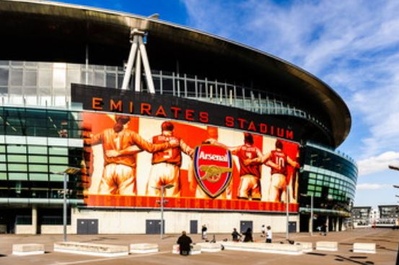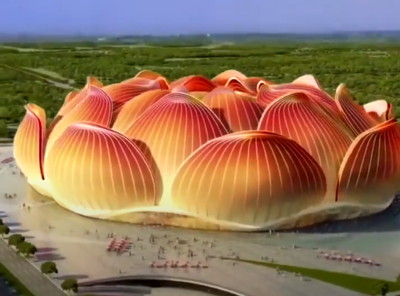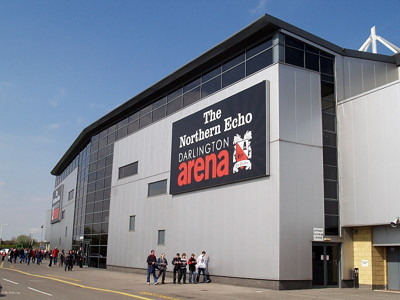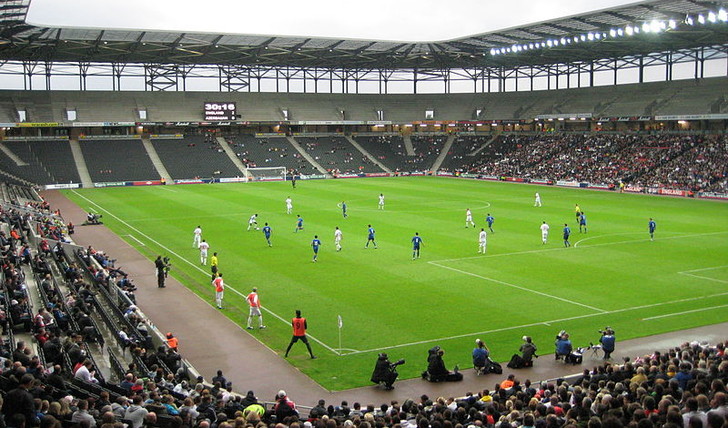In the football world, there are stadiums that are the biggest and brightest things around. There are others that are steeped in history and boast a wealth of memories for the fans. All of them have virtues, things that ensure their place in the history books for one reason or another. Yet there are also a number of stadiums that were, for want of a better word, mistakes. The grounds that never should have been made in the first place.
There can be a number of reasons why a football stadium is seen as a folly. Those that are not close to where the ‘spiritual’ home of the fanbase exists, for example. There are some that were built for a different reason and then converted into a football ground largely for monetary reasons. Whatever the decision making behind them becoming football grounds, they are widely acknowledged now as being mistakes and we look at them here.
The Olympic Stadium – West Ham

For many football supporters, West Ham will always be associated with Upton Park. The fact that most didn’t learn that the stadium’s official name was the Boleyn Ground until it was time for it to be demolished spoke volumes. Upton Park was a close stadium, with virtually no gap between the stands and the pitch. It was an intimidating place to go, with many a club’s successes coming to an end there.
The Olympic Stadium, on the other hand, couldn’t be more different. Built, as the name suggests, for when The United Kingdom hosted the Summer Olympics in 2012, the venue was converted to host football matches after a protracted battle for its use in the wake of the Olympic Games. Eventually the right to call it home fell to West Ham United, who would go on to rename it as the London Stadium.
The Hammers paid £15 million for a 99-year lease on the venue, which cost £429 million to build and an additional £190 million or so for the conversation to a football stadium, with the club also paying approximately £2 million a year in rent. For supporters of the team, though, the new ground is far from a welcome replacement for Upton Park. A running track separates the stands from the pitch, for example, killing the atmosphere.
The Emirates Stadium – Arsenal
 In some ways, it is misleading to refer to Arsenal’s Emirates Stadium as a folly. After all, the new stadium is one of the most impressive in world football and is designed with supporters in mind. There can also be little debate that the club needed to move away from Highbury, the ground that it had played its football in since moving to North London in 1913 and known affectionately as ‘the home of football’.
In some ways, it is misleading to refer to Arsenal’s Emirates Stadium as a folly. After all, the new stadium is one of the most impressive in world football and is designed with supporters in mind. There can also be little debate that the club needed to move away from Highbury, the ground that it had played its football in since moving to North London in 1913 and known affectionately as ‘the home of football’.
In the wake of the Taylor Report, the ground’s capacity had been limited to 38,419 and its situation in the middle of a residential area meant that expansion was all but impossible. So it was that a decision was taken to move to a new stadium, which eventually happened with the opening of the Emirates in July of 2006. The problem was that it cost the club nearly £400 million, which limited the club’s transfer capabilities.
Having won 13 league titles during the club’s time at Highbury, the Gunners have yet to win the top-flight since moving grounds. Though they have won five FA Cups during that time, all of those came when both the semi-finals and final were played at neutral grounds. The Arsenal manager who oversaw the move to the Emirates, Arsene Wenger, later admitted that he thought the club had ‘left its soul at Highbury’.
His major complaint was that the club was unable to recreate the atmosphere of the old stadium, with the stands needing to be further from the pitch and the incline needed to be smaller. Whilst the experience is a far nicer one for supporters in a practical sense, the stadium itself is superb and the future might yet to see them win the title there, there can be little doubt that the move was a mistake in the short-to-medium term.
Evergrande Stadium – Guangzhou Evergrande

Perhaps it’s unfair to single out a stadium that hasn’t completed construction yet, but there can be no doubt that Evergrande Stadium in the Chinese city of Guangzhou will struggle to prove its worth. It is projected to cost $1.7 billion in construction costs, with the design of the stadium causing it to look like a lotus flower. When construction is completed in 2022, it will have 100,000 seats and become the biggest stadium in the world.The President of the real estate conglomerate Evergrande, Xia Haijun, believes that the opening of the stadium will help to take Chinese football to the next level on a global scale, becoming a landmark in line with the likes of the Sydney Opera House and the Burj Khalifa. The reality is, however, that the stadium is likely to stand half empty for the vast majority of the football matches that are hosted within it.
Since Evergrande took over the Chinese club they have won countless league titles and some Asian Champions League. Even during this period of unprecedented success, though, the average crowd sat at just shy of 46,000 in the city-owned Tianhe Stadium that that they currently play their matches in. Perhaps it will sell out every week once it opens its doors, but for a cost of $1.7 billion that’s the least its owners might expect.
Reynolds Arena – Darlington

It is never a good idea when someone gets involved in the development of a football ground because they see it is as something of a vanity project. That, though, is exactly what happened with Reynolds Arena, named after the man who poured money into it when he saw it as Darlington FC’s ticket to the Premier League. Having spent most of their time at 8,000-seater Feethams, a 25,000 stadium was always likely to be a folly for the club.
Darlington Football Club were quite happy to be renovating their old ground when George Reynolds got involved, spending huge amounts of money to open a new all-seater stadium. When the first game attracted crowds of more than 11,600, he might well have felt he was pointing the club in the right direction. Those numbers soon fell, however, and ended up with less than 10% of the club’s capacity turning up to watch matches.
In 2004, Reynolds was done for tax evasion and ended up going to prison, meaning that the club was tied to a large stadium that it couldn’t afford to pay for. They were kicked out of the Conference in 2012, starting life from the bottom of the footballing pyramid and playing games at the more realistic 3,000-seater Blackwell Meadows. Reynolds Arena hosts a local rugby union team now, welcoming crowds of less than a thousand.
Stadium MK – Milton Keynes Dons

There’s a reason some things work in American but don’t work in the United Kingdom, such as actual butter being squirted onto popcorn and reality TV stars becoming President. In spite of this, Pete Winkelman decided to try to find a Football League side that would be up for relocating to the satellite town of Milton Keynes back in 2000, eventually persuading Wimbledon to do exactly that.
So it was that the club re-branded as the Milton Keynes Dons, with Stadium MK opening its doors in 2007. At the same time, a phoenix club called AFC Wimbledon formed, with supporters of the original Wimbledon side being disgusted with the idea of their side having been moved across the country. The town of Milton Keynes didn’t exactly take the new club to heart, either, with attendances staying at about the 10,000 mark.
AFC Wimbledon made the journey through the non-league pyramid, eventually joining MK Dons in the third tier of English football. Most people consider AFC Wimbledon to be the original Wimbledon, with MK Dons being seen by most football fans as a new club entirely. The largest crowd at Stadium MK occurred when it hosted a match between Fiji and Uruguay during the 2015 Rugby World Cup.
